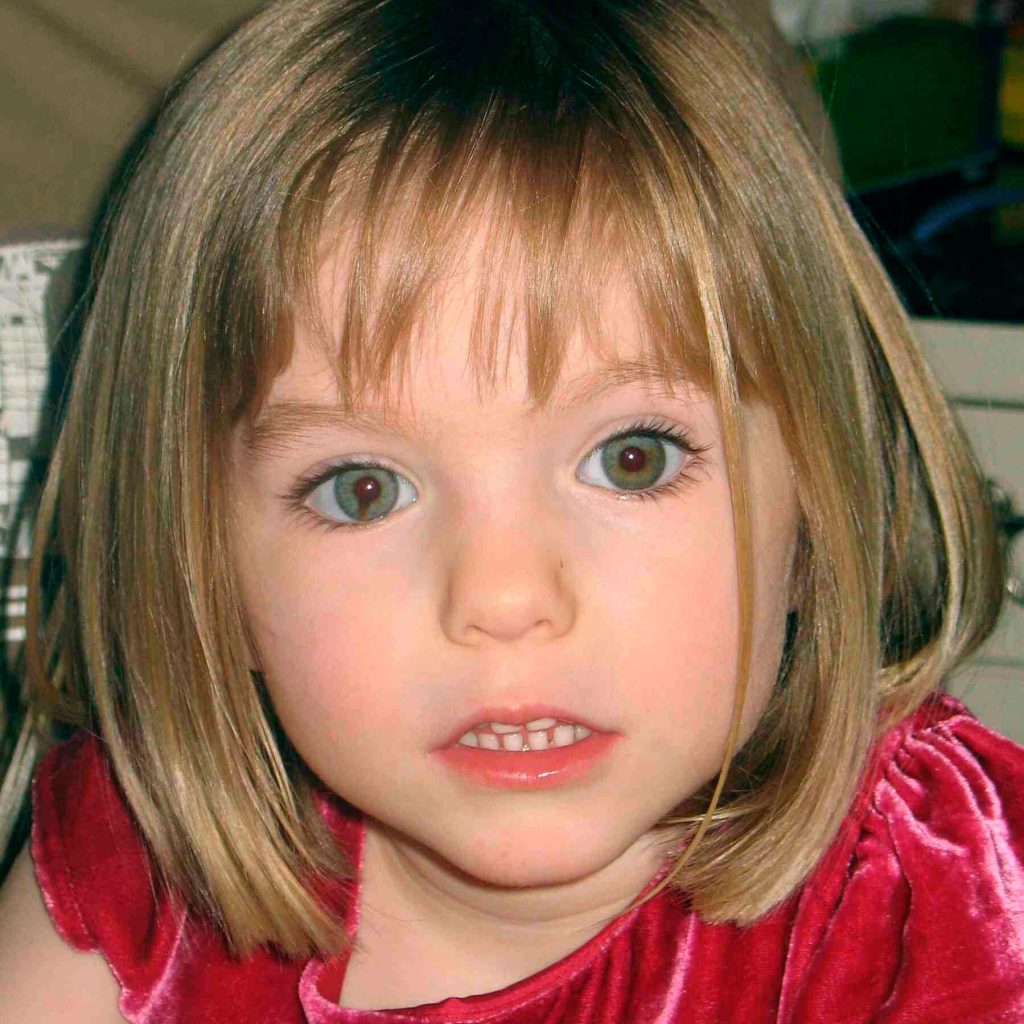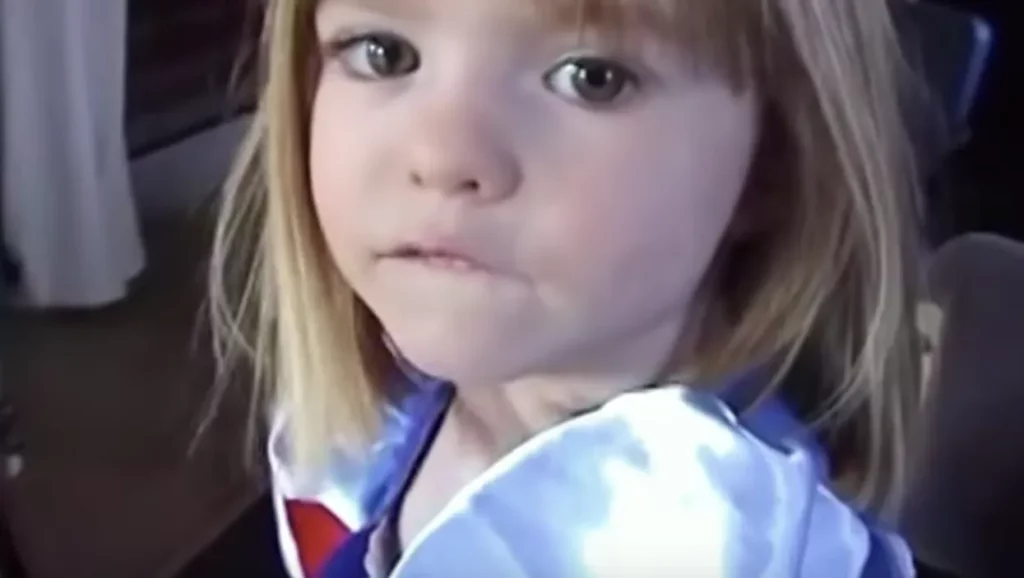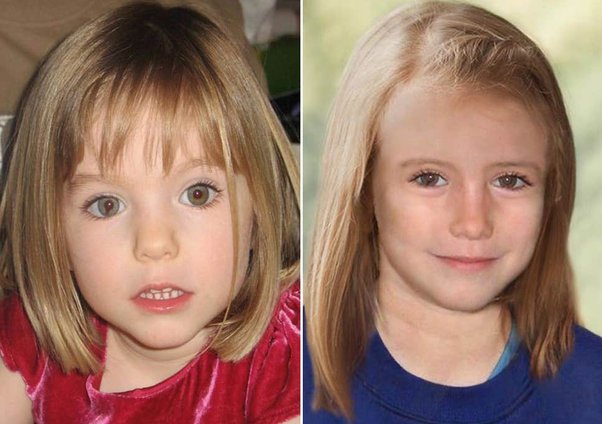One of the most famous missing child cases in history is the disappearance of Madeleine McCann. Madeleine Beth McCann, a British child, went missing on the evening of May 3, 2007, while on a family vacation in Praia da Luz, Portugal. She was just three years old at the time of her disappearance. The case received widespread media attention and has remained a high-profile unsolved mystery for many years.
The search for Madeleine McCann has involved various law enforcement agencies, including the Portuguese police and British authorities. Despite extensive investigations and global media coverage, Madeleine’s whereabouts remain unknown, and the case has continued to captivate public interest and speculation.
How do missing child cases become famous?

Fame in the context of missing child cases is a complex and multifaceted concept. It typically refers to the degree of public recognition, media attention, and societal impact that a particular missing child case receives. Several factors contribute to the fame of these cases:
Media Coverage: The extent and intensity of media coverage play a pivotal role in determining the fame of a missing child case. Cases that receive extensive coverage from local, national, and international media outlets tend to become more widely known. The narrative style, human interest angle, and emotional appeal of a case can also influence media attention.
Age and Circumstances of the Child: Cases involving very young children, such as infants or toddlers, often attract more attention due to their vulnerability. Additionally, cases with unusual or perplexing circumstances, such as abductions from seemingly safe environments or mysterious disappearances, tend to be more famous.
Ongoing Investigations and Developments: The ongoing nature of investigations and developments can sustain the public’s interest and keep a case in the spotlight. New leads, arrests, or significant breakthroughs can reignite public attention and discussions about the case.
Public Involvement and Support: The level of public involvement and engagement can significantly impact a case’s fame. When a case resonates with people on an emotional level and triggers a collective desire to help, it often garners widespread support, including rallies, fundraising efforts, and community initiatives.
Impact on Society and Policy Changes: Some missing child cases lead to changes in laws, policies, or procedures related to child safety and abduction prevention. These cases tend to be more famous, as they not only capture the public’s heart but also drive tangible societal changes.
Mention the Diversity of Famous Missing Child Cases Around the World
Famous missing child cases come in various forms, reflecting the diversity of circumstances and geographic locations in which they occur:
Geographic Diversity: Missing child cases are not confined to a single region or country. They occur worldwide, from developed nations to conflict zones and impoverished areas. The diversity of cases highlights that child abduction and disappearance are universal concerns.
Cultural Variation: Cultural and societal norms can influence how missing child cases are perceived and addressed. In some cultures, family dynamics and community responses may differ significantly, affecting the course of an investigation and the level of media attention.
Different Circumstances: Missing child cases encompass a wide range of circumstances, including stranger abductions, parental abductions, runaways, and cases of lost children. Each type of case presents unique challenges and complexities that contribute to their diversity.
Success Stories: While many missing child cases remain unsolved, some have happy endings where the child is found and reunited with their family. These success stories provide hope and contrast to the more tragic and unsolved cases.
Global Collaboration: Some high-profile missing child cases have led to international collaborations between law enforcement agencies, governments, and advocacy groups. These cases demonstrate the global nature of child abduction and the importance of cross-border cooperation.
What’s the Madeleine McCann case about?
The Madeleine McCann case stands out as one of the most famous missing child cases due to the young age of the victim, the circumstances of her disappearance, and the extensive media coverage it received.
Detailed Information about Madeleine McCann’s Case
Date and Location of Disappearance: Madeleine McCann disappeared on the evening of May 3, 2007, from the Ocean Club resort in Praia da Luz, a coastal town in the Algarve region of Portugal.
She was on a family vacation with her parents, Kate and Gerry McCann, and her younger twin siblings.
Her Age at the Time of Disappearance: Madeleine was just three years old when she went missing, making her an incredibly young and vulnerable victim. Her young age added to the shock and emotional impact of her disappearance.
Family Background and Circumstances:
The McCann family, from the United Kingdom, was on vacation with a group of friends.
On the evening of Madeleine’s disappearance, her parents, along with friends, dined at a nearby restaurant while their children slept in the family’s holiday apartment.
The parents took turns checking on their children periodically, but during one of these checks, Kate McCann discovered that Madeleine was missing. The window in the children’s bedroom was found open, and the family immediately reported her disappearance to the authorities.
This case gained significant attention due to the circumstances, as it appeared to be an abduction from what was considered a safe and familiar environment.
Media Coverage and Public Interest
Global Media Attention: The Madeleine McCann case received extensive media coverage, not just in the UK but also internationally. It was prominently featured in newspapers, television programs, and online media.
The case’s details, including photographs of Madeleine, were widely circulated in an effort to gather information and leads.
Ongoing Interest: The public, particularly in the UK, followed the case closely. The emotional appeal of a young child’s disappearance, as well as the family’s desperate search for answers, resonated with many.
Furthermore, the case generated a continuous stream of news reports, documentaries, and books, keeping the story in the public eye for years.
Impact on Society: Madeleine’s disappearance had a profound impact on discussions around child safety, family vacations, and parental responsibilities.
Furthermore, the case prompted discussions about how such incidents could happen even in perceived safe environments and led to increased awareness of child abduction risks.
Ongoing Investigations: The Portuguese police and British authorities conducted investigations into Madeleine’s disappearance.
The case remained open, and there were various leads and theories pursued over the years.
Advocacy and Awareness: The McCann family, along with various child protection organizations, worked to keep the case in the public eye and raise awareness about the issue of missing and abducted children.
How do other cases raise awareness?

Famous missing child cases share common factors contributing to their fame, including extensive media attention and their ability to drive discussions and policy changes related to child safety and abduction prevention.
Mention a Few Other Well-Known Missing Child Cases
Etan Patz: Etan Patz, a six-year-old boy from New York City, disappeared on May 25, 1979, while walking to his school bus stop.
His case is significant because it led to changes in the way missing children cases were handled and is often cited as the catalyst for National Missing Children’s Day.
Jaycee Dugard: Jaycee Dugard was kidnapped at the age of 11 in 1991 and held captive for 18 years in California.
Her case gained fame after her miraculous discovery and rescue in 2009, shedding light on long-term abduction cases and the importance of resilience.
Elizabeth Smart: Elizabeth Smart was abducted from her home in Salt Lake City, Utah, in 2002 when she was 14 years old.
Her eventual rescue and the subsequent trial of her captors garnered substantial media attention and contributed to discussions about child abduction and recovery.
Highlight Common Factors Contributing to the Fame of These Cases
Media Attention: The level of media attention is a common factor that contributes to the fame of missing child cases. Extensive coverage by local, national, and international media outlets raises public awareness and keeps the case in the spotlight.
High-profile interviews, documentaries, and television programs often amplify the impact of the case.
Impact on Society and Policy Changes: Missing child cases that lead to significant policy changes or serve as catalysts for broader discussions tend to be more famous. Some examples include:
- The creation of the National Center for Missing & Exploited Children (NCMEC) and the Amber Alert system in the United States, which were influenced by high-profile cases.
- Legal reforms, such as changes in laws related to sex offender registries and the treatment of child victims and witnesses, may result from public outcry and awareness generated by these cases.
- Increased funding and resources for law enforcement agencies to investigate and address missing child cases.
- These cases often become rallying points for child protection advocates, leading to increased focus on child safety and proactive measures to prevent future abductions.
The impact extends to societal discussions about parenting, child safety, and the vulnerability of children in various environments. Parents and communities often reevaluate their own practices and awareness.
FAQ’s
Who is the first missing child?
The identity of the first missing child is not definitively known, as missing children have existed throughout history. There is no single recorded “first” missing child.
Who is the longest missing person?
The longest missing person who was eventually found is Jaycee Dugard, who was kidnapped in 1991 at the age of 11 and found in 2009 after being held captive for 18 years.
How many kids have gone missing?
The number of missing children worldwide varies constantly, making it difficult to provide an exact count. Many organizations, such as the National Center for Missing & Exploited Children, work to track and locate missing children.
What country has the most missing children?
The prevalence of missing children varies by country. In the United States, for example, the National Center for Missing & Exploited Children tracks cases.
Who is the first missing person?
There is no specific record of the “first” missing person, as cases of people going missing have occurred throughout history.
When was the first missing kid?
The specific date of the first missing child is not documented, as such cases have been recorded over centuries.
Final Words
In conclusion, missing child cases that become famous do so for several reasons. Media coverage, the age and circumstances of the child, ongoing investigations, public involvement, and their impact on society and policy changes all play a part in their notoriety.
Moreover, these factors combine to create a powerful narrative that captures the public’s attention and encourages discussions about child safety and abduction prevention.
Ultimately, the fame of these cases serves as a reminder of the importance of protecting and finding missing children, keeping the issue in the forefront of our collective consciousness.











